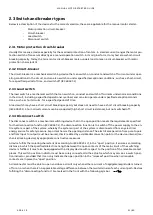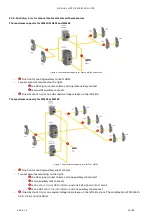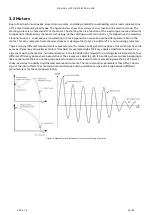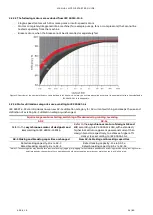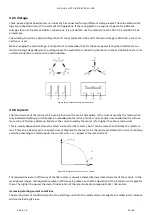
MANUAL MOTOR STARTER GUIDE
APRIL 19
31/80
3.2.1 About motors
Modern electrical motors are available in many different forms, such as single-phase motors, three-phase motors,
brake motors, synchronous motors, asynchronous motors, special customized motors, two speed motors, three
speed motors, and so on, all with their own performance and characteristics. For each type of motor there are vari-
ous mounting arrangements, for example foot mounting, flange mounting or combined foot and flange mounting.
The cooling method can also differ, from the simplest motor with free air self-circulation to a more complex motor
with totally enclosed air-water cooling with an interchangeable cassette type of cooler.
To ensure a long life for the motor it is important to select it with the correct degree of protection when operating
under heavy-duty conditions in a severe environment.
The two letters IP (International Protection) state the degree of protection followed by two digits, the first of which
indicates the degree of protection against contact and penetration of solid objects, whereas the second states the
motor’s degree of protection against water.
The end of the motor is defined in the IEC-standard as follows:
−
The D-end is normally the drive end of the motor
−
The N-end is normally the non-drive end of the motor
Figure 13: Inside a motor with all the main components.
3.2.2 Squirrel cage motors
The squirrel cage motor is the most common type of motor on the market. It is relatively cheap, and the maintenance
costs are usually low. There are many different manufacturers represented on the market, selling at various prices.
Not all motors have the same performance and quality as, for example, motors from ABB.
The starting current is a characteristic of the motor. The starting time is a function of load torque, inertia and motor
torque and is influenced by the motor technology. As the starting current (6-13 x I
e
) is always a lot higher than the
rated operational current I
e
, an excessively long starting or braking period will cause an overload (temperature rise)
in the motor. This could lead to electromechanical stress or damage the motor’s isolation.
The lifetime of an electrical engine is linked to the temperature stress. As a rough guide, the lifetime of the winding
isolation is reduced by half each time the temperature exceeds 10°C. Even slight temperature increases can reduce
the life time of an electrical engine significantly.





